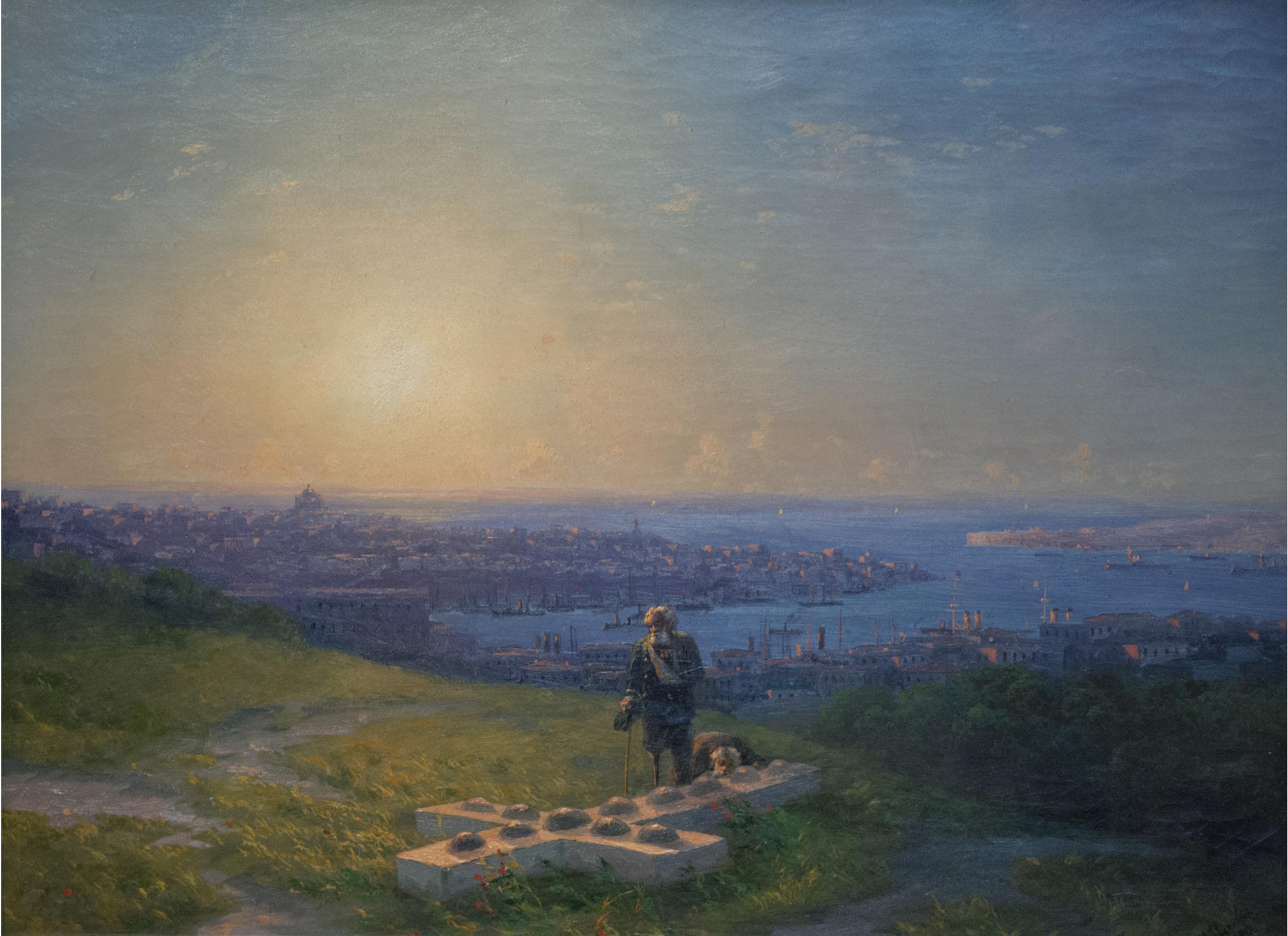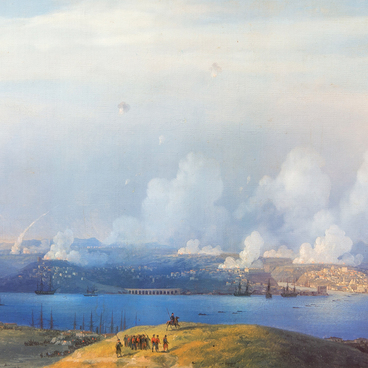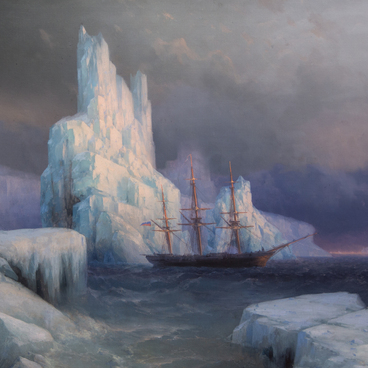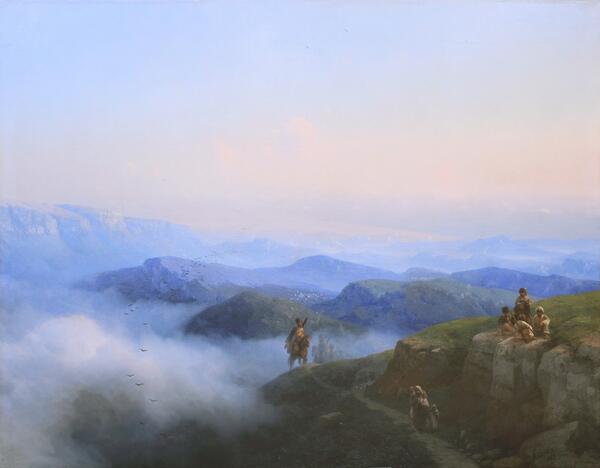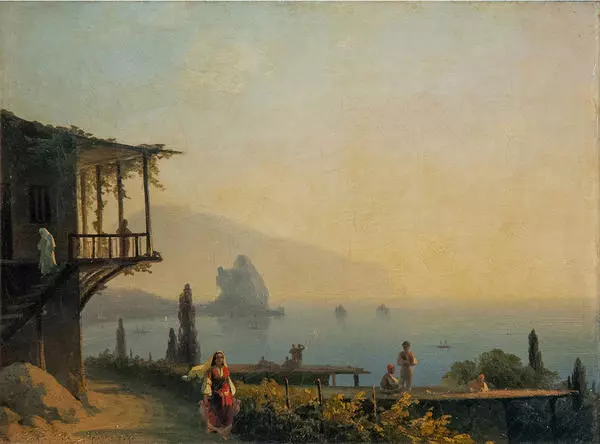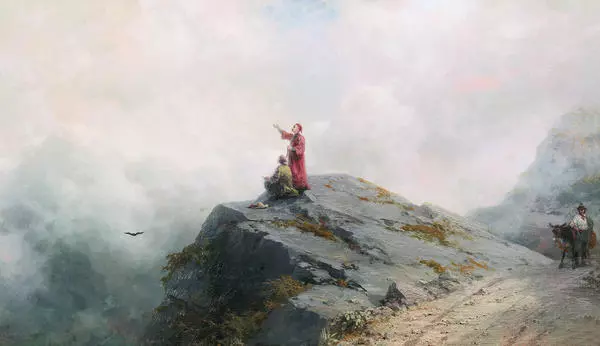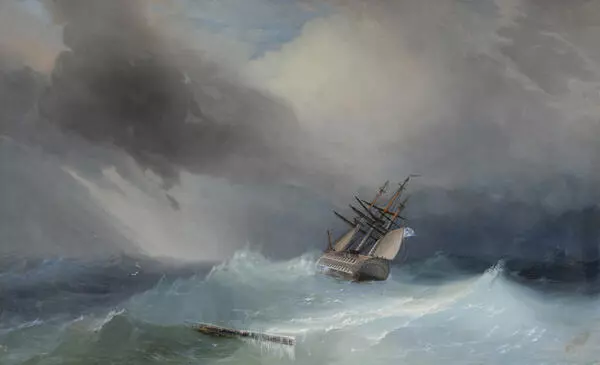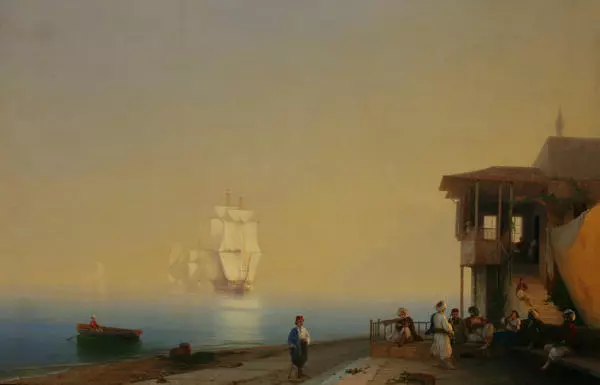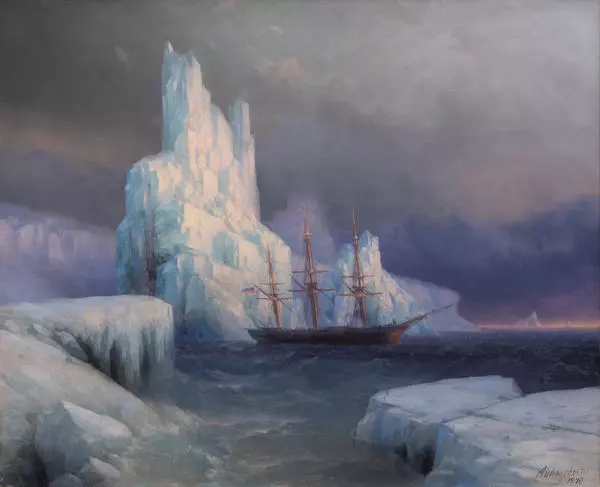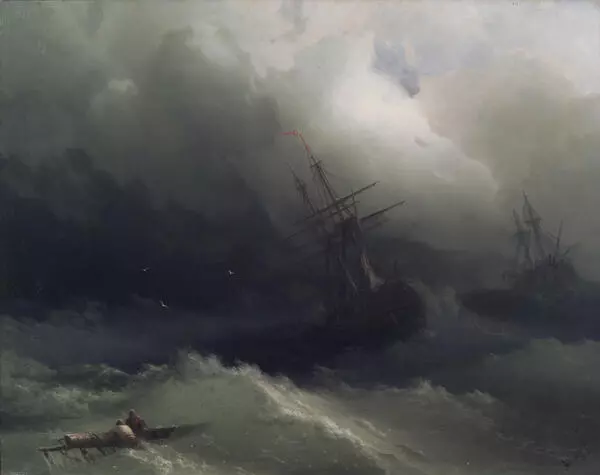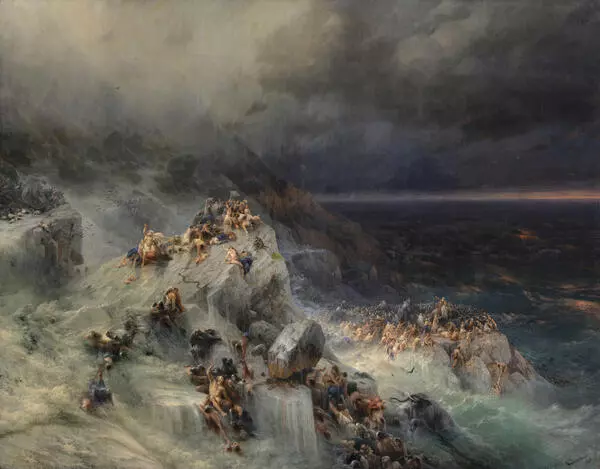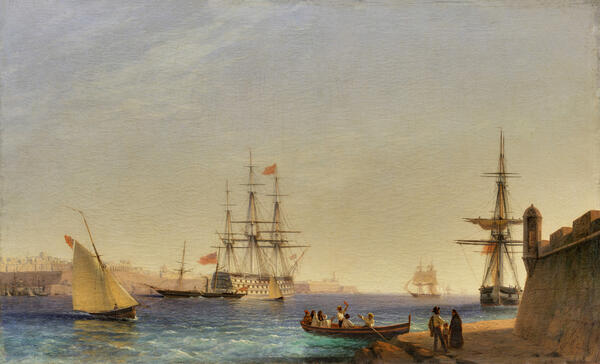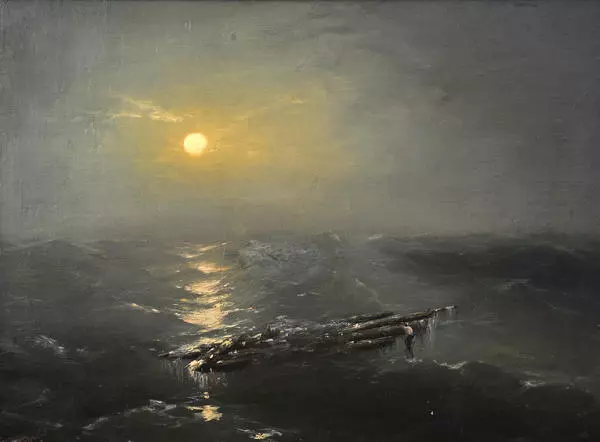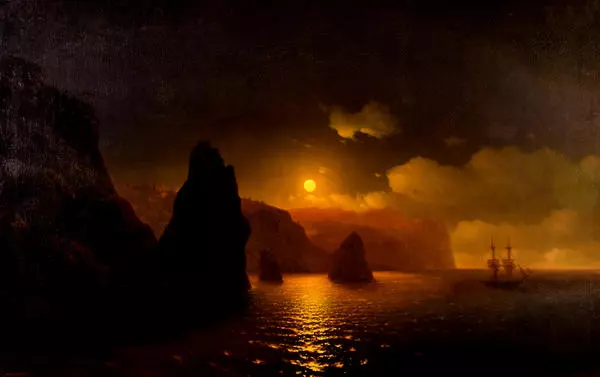Ivan Aivazovsky’s battle paintings can be regarded as a chronicle of the Russian Navy feats. While he gave true depictions of naval battles, he was also familiar with warship commanders and participated in many voyages. The Crimean War of 1853–1856 made the artist even closer to the fleet. Throughout his life, he created an epic dedicated to the heroic deeds of the warships of those years. Aivazovsky dedicated many interesting paintings to the defence of Sevastopol that became the culmination of the Crimean War.
The Sevastopol epic occupies a special place in Aivazovsky’s work. At the beginning of the war, the artist left all his activities and went to the city to organize an exhibition of his battle paintings. All money that he managed to earn was given to charity. He provided active support to wounded soldiers and their families refusing to leave the besieged Sevastopol for a long time. While impressed by this siege, he painted one of his most famous pictures on this subject, Siege (Bomb Attack) of Sevastopol.
Almost 40 years after the Crimean War, Aivazovsky painted another picture dedicated to the defence of Sevastopol, Malakhoff Hill. It was also a tribute to the fallen heroes’ memory. The artist depicted two aged participants in the Crimean War, who bowed down before a memorial cross at the place where Vice Admiral Kornilov had died. Aivazovsky was a friend of Vladimir Kornilov and often represented him in his drawings and paintings. In 1846, when the painter celebrated the 10th anniversary of his artistic activities, Kornilov arrived from Sevastopol in Feodosia on the Twelve Apostles ship accompanied by five warships to greet Aivazovsky. The admiral headed the defence of Sevastopol and was mortally wounded in October 1854.
In Malakhoff Hill, Sevastopol is represented under sunset rays. The city is drowning in twilight bluish light, but the sunrays still illuminate the Malakhoff hill peak. In the foreground, Aivazovsky depicted a memorial cross, lined with cannon balls. Next to the cross, we can see old warriors, who came to honour memory of their deceased commander. There is a legend saying that Aivazovsky was inspired by a soldier, who met him in Moscow and asked to paint a picture to commemorate Kornilov.
The Sevastopol epic occupies a special place in Aivazovsky’s work. At the beginning of the war, the artist left all his activities and went to the city to organize an exhibition of his battle paintings. All money that he managed to earn was given to charity. He provided active support to wounded soldiers and their families refusing to leave the besieged Sevastopol for a long time. While impressed by this siege, he painted one of his most famous pictures on this subject, Siege (Bomb Attack) of Sevastopol.
Almost 40 years after the Crimean War, Aivazovsky painted another picture dedicated to the defence of Sevastopol, Malakhoff Hill. It was also a tribute to the fallen heroes’ memory. The artist depicted two aged participants in the Crimean War, who bowed down before a memorial cross at the place where Vice Admiral Kornilov had died. Aivazovsky was a friend of Vladimir Kornilov and often represented him in his drawings and paintings. In 1846, when the painter celebrated the 10th anniversary of his artistic activities, Kornilov arrived from Sevastopol in Feodosia on the Twelve Apostles ship accompanied by five warships to greet Aivazovsky. The admiral headed the defence of Sevastopol and was mortally wounded in October 1854.
In Malakhoff Hill, Sevastopol is represented under sunset rays. The city is drowning in twilight bluish light, but the sunrays still illuminate the Malakhoff hill peak. In the foreground, Aivazovsky depicted a memorial cross, lined with cannon balls. Next to the cross, we can see old warriors, who came to honour memory of their deceased commander. There is a legend saying that Aivazovsky was inspired by a soldier, who met him in Moscow and asked to paint a picture to commemorate Kornilov.
